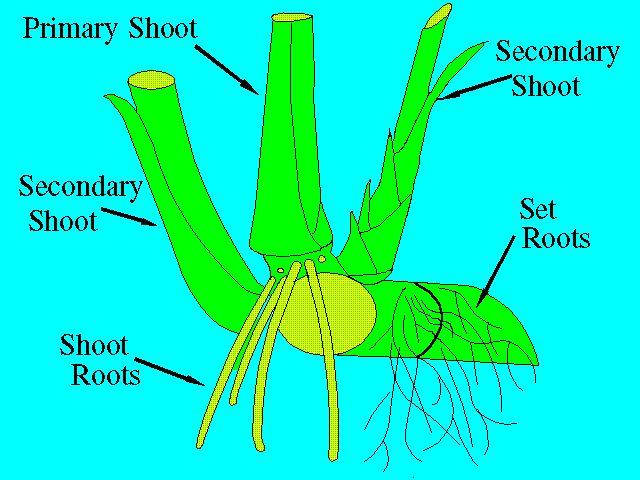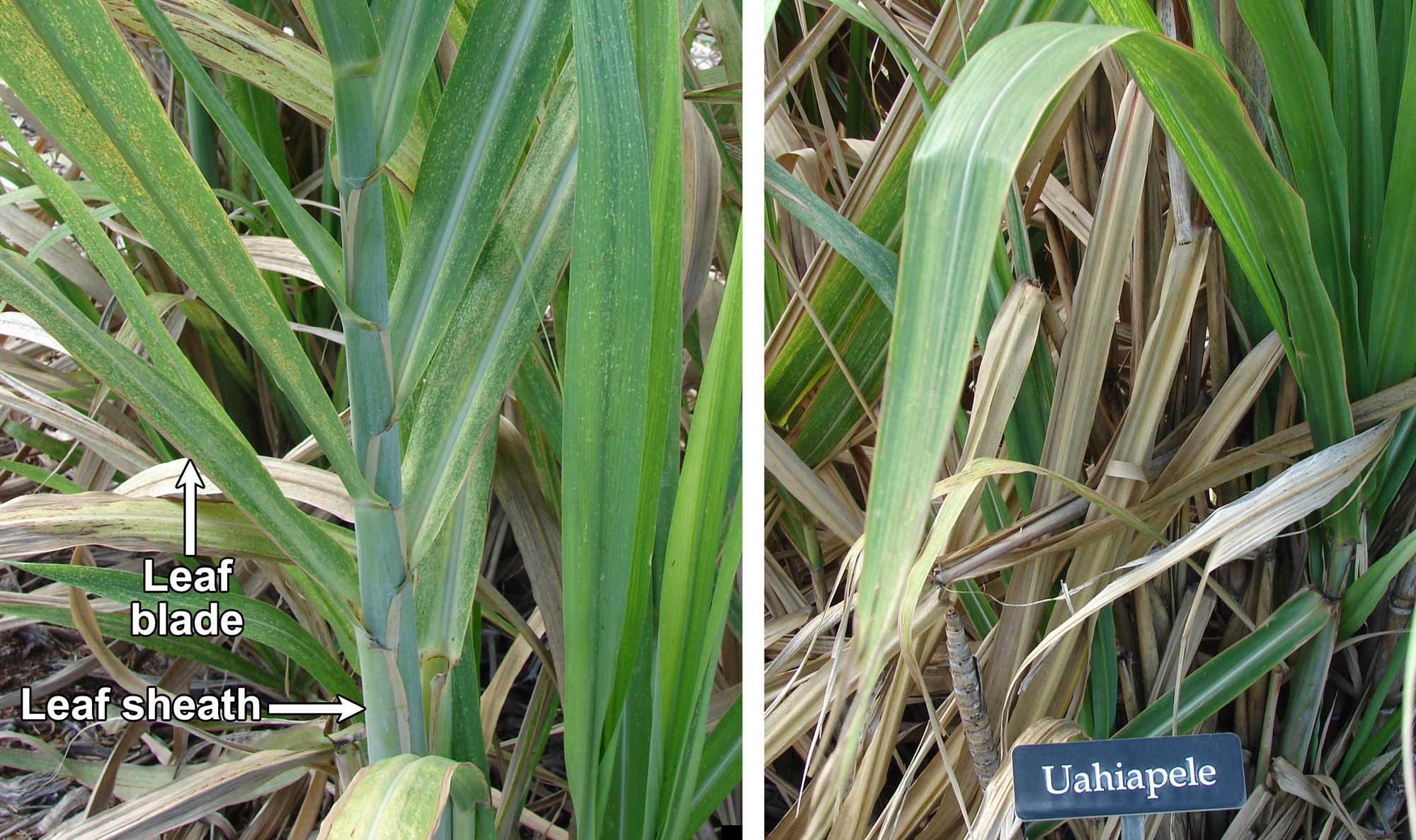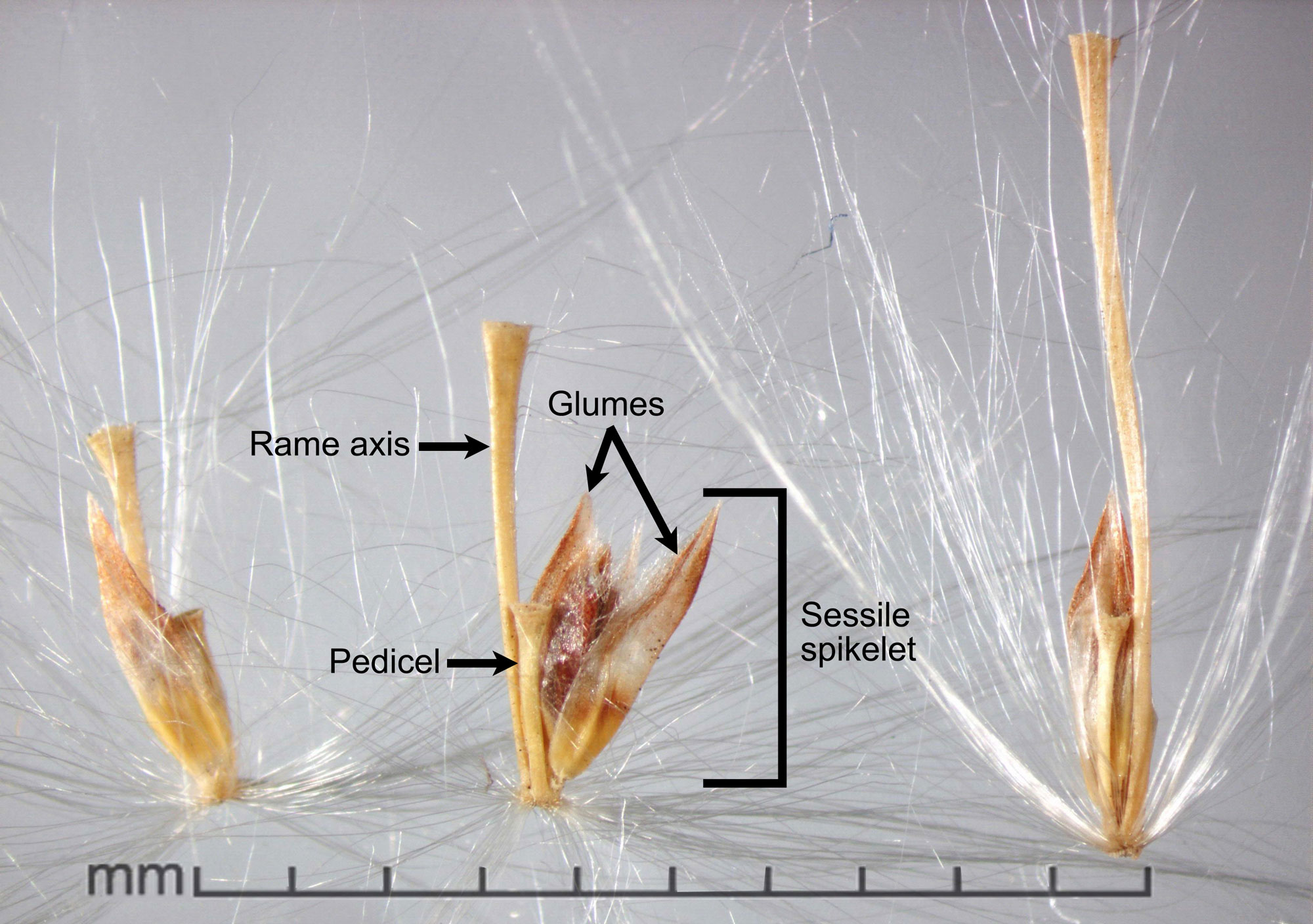Botany
- Sugarcane belongs to family Poaceae in the genus Saccharum.
- This genus possesses 6 species, namely officinarum, spontaneum, robustum, edule, barberi and sinense.
- It is a tall perennial plant growing erect even upto 5 or 6 metres.
a. ROOT SYSTEM:
- The root system is fibrous and consists of two types of roots, namely ‘sett roots’ and ‘shoot roots’.
- Sett roots are initially activated roots arising from the base of cane joint when a sugarcane sett is planted.
- These are thin and highly branched roots functioning for supply of moisture and nutrients to growing primary shoot for a limited period.
- Shoot roots are permanent roots produced later from the lower rings of the lower nodes of shoot after the emergence of primary shoot from the bud.
- S of root shows 4 principal parts viz. root cap, growing point, region of elongation and region of root hair.

b. STALK
- Stalk consists of segments called joints made of nodes and internodes.
- Joints at base are short and intermodal length gradually increases upwards.
- A small portion of stalk is below the ground which is called as rootstock.
- At each node there is a bud, sometimes known as an ‘eye’ appearing on opposite sides of the cane.
- At the apex of the stalk is an apical bud responsible for elongation of the stalk.
- A cross section of internodes from outside to inside shows epidermis, cortex and ground tissue embedded with vascular bundles.

c. LEAF
- Leaf consists of sheath and blades separated by blade joint.
- Sheath entirely covers the stalk extending over at least one complete internode.
- Two wide areas called dewlaps are found in the blade joint.
- A membranous appendage called ligule is present inside the sheath which separates sheath from leaf blade.
- Ear shaped appendages called auricles are located at the upper part of sheath margin.Pubescence or hairs are generally absent in leaves of commercial varieties.
- The leaf blade is a long, flat structure with color varying from yellowish green to dark green depending on both variety and nutritional status of the plant.

d. INFLORESCENCE
- Inflorescence generally called the ‘arrow’ is an open panicle.
- It is long and tapering with a length of 30 centimeters of more.
- The arrangement of the spikelet is racemose.
- Lower spikelets are sessile and upper ones are stalked, both spikelets ate surrounded at the base by a ring of long silky hairs.
- Flowers open in succession over a number of days.
- Flowers have both male and female organs but not all produce fertile pollen.
